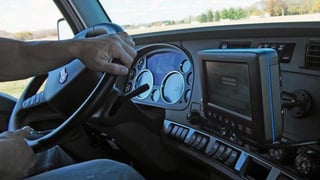 With the upcoming Electronic Logging Device Mandate just over a year away with a deadline of December 16, 2017, many companies have questions about what this means for their fleet, and what is the best way to remain compliant. Preparation in this area will prove beneficial with this major change, especially when it comes to choosing an ELD vendor.
With the upcoming Electronic Logging Device Mandate just over a year away with a deadline of December 16, 2017, many companies have questions about what this means for their fleet, and what is the best way to remain compliant. Preparation in this area will prove beneficial with this major change, especially when it comes to choosing an ELD vendor.
Why the change?
According to the FMCSA ELDs will improve roadway safety by employing technology to strengthen commercial truck and bus drivers’ compliance with hours-of-service regulations that prevent fatigue. It will also provide an additional one million plus in revenue with the reduction of paper logs. Lastly, it will also increase the efficiency of roadside law enforcement personnel in reviewing driver records.
What’s in it for the company and driver?
An ELD automatically records driving time. It can also monitor engine hours, vehicle movement, miles driven, and location information.
The Final Rule provides both procedural and technical provisions designed to protect commercial truck and bus drivers from harassment resulting from information generated by ELDs. It is essentially designed to strictly prohibit commercial driver harassment.
New hours-of-service supporting document (shipping documents, fuel purchase receipts, etc.) requirements accompany this final rule that should result in additional paperwork reductions. In most cases, a motor carrier would not be required to retain supporting documents verifying on-duty driving time.
ELD Requirements
The ELD’s must be able to:
- Automatically record date
- Time and location information
- Engine hours
- Vehicle miles
- ID information of the driver using the device
- Devices must sync with its corresponding vehicle’s engine to record engine on and off time
- Data must be available “on demand” during a roadside inspection.
The cost of ELD’s is definitely a concern to motor carriers along with the effect it will have on driver culture and production. As we approach the effective date of the ELD mandate mass production of the ELDs from existing vendors along with new ELDs vendors/products should create a competitive environment for motor carriers to purchase a compliant device.
HNI has many clients who have already embraced the new ELD mandate and integrated ELDs into their fleets. Based on some of our discussions with those clients the driver production has remained the same or actually increased due to higher efficiency. In addition the majority of the drivers accepted the ELDs to the extent that electronic is preferred by them in a very short period after implementation.
ELD Vendors
It’s important that motor carriers don’t wait too long to implement ELDs into their fleets as vendors may not be able to handle the high demand of ELD requests timely enough for the deadline. Here are some of the vendors offering various compliant electronic logging devices available to the motor carriers:
- PeopleNet
- Rand McNally
- Omnitracs
- BigRoad
- Fleetmatics
- Keep Truckin
- Teletrac
- Garmin
- J.J. Keller
- VDO Roadlog
What to consider when selecting an ELD vendor?
- Cost – Of course as with any commodity purchase cost will be high on everyone’s list. Create a cost vs. benefit analysis and explore various financing options when making your final ELD decision.
- Integration with your current and future systems – You will most likely want to purchase an ELD that can easily integrate with your current or future operating systems. You should also interview your vendor to determine what onboarding and ongoing programming support they offer with your purchase. Be sure to determine if the programming and/or training support is included with your purchase or will create additional cost. If you are currently using or considering a vendor providing AOBRD’s you may want to ensure that the transition to ELD’s is a software update and not installation of new hardware.
- Compliance – Be sure to select an ELD that is guaranteed to be compliant with the new mandate and can possibly be reprogrammed or developed to adhere to any future ELD regulation updates.
- Additional features – Many ELD’s have additional features such as GPS tracking, built in printers, electronic data reporting that can be used or extracted for driver scorecarding, IFTA reporting, etc.
- Feasibility – Make sure your ELD is user friendly for operations, management, and most importantly the driver. You will also want to explore how the ELD will connect wirelessly and online.
Preparation for the ELD mandate deadline will be crucial to remaining compliant. Start your process of integrating into your fleet as timely as possible.
.png?width=69&height=53&name=Acrisure%20Logo%20(White%20Horizontal).png)


